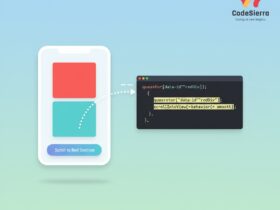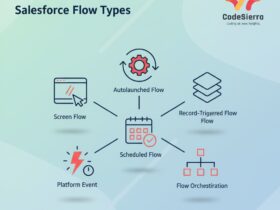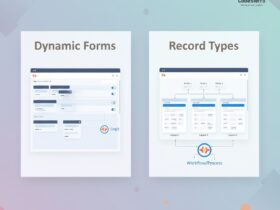Practical mentoring guidelines for onboarding and developing Salesforce interns — 12 actionable steps to accelerate learning, build confidence, and create long-term career pathways within the Salesforce ecosystem.
This guide distills a mentor-first approach to help you structure an internship that delivers real growth for the intern and reliable value for your organization. It includes orientation tips, hands-on learning ideas, collaboration and feedback best practices, and ways to turn short-term internships into lasting talent pipelines.
Why mentor intentionally?
Mentorship converts curiosity into capability. When mentors provide structure, context, and safe opportunities to practice, interns move faster, make fewer costly mistakes, and are likelier to stay with the company or contribute meaningfully to the Salesforce community.
12 Practical mentoring steps
- Understand the intern’s goals: Start with a short intake conversation to capture background, strengths, and career interests. Use this to tailor projects and learning paths.
- Provide orientation: Walk through your Salesforce org: data model, major automations, active projects, and sandbox vs. production practices.
- Set expectations: Agree on deliverables, working hours, check-in cadence, and success criteria. Document these in a simple onboarding checklist.
- Encourage exploration: Point interns to Trailhead modules, internal docs, and small discovery tasks to broaden their exposure safely.
- Hands-on experience: Assign incremental tasks — from configuration and declarative work to supervised Apex or Flow changes — with clear review steps.
- Promote problem-solving: Ask interns to research solutions first, document their approach, then bring questions. This builds independence and troubleshooting skill.
- Foster collaboration: Invite them to cross-functional meetings and pairing sessions with analysts, QA, and developers to learn real-world workflows.
- Feedback and reflection: Give frequent, actionable feedback. Encourage a weekly reflection log to track lessons learned and blockers.
- Provide resources and support: Share cheat sheets, org diagrams, testing sandboxes, and training recordings. Make it easy to find answers.
- Career development: Discuss realistic next steps (Admin, Developer, Architect tracks), recommended certifications, and longer-term goals.
- Celebrate achievements: Publicly recognize milestones — completed Trailhead badges, successful deployments, or customer-impacting fixes.
- Seek feedback: Ask the intern what worked and what didn’t. Use their input to continuously improve future internships.
Best practices and pitfalls to avoid
Keep tasks meaningful but manageable. Avoid assigning passive work that offers no learning, and don’t expose interns to production changes without proper review. Balance autonomy with mentorship — gradually reduce oversight as competence grows.
Onboarding checklist (quick)
- Intro to org architecture and security
- Trailhead learning path & initial modules
- Sandbox access and development workflow
- First small task with pair-review
- Bi-weekly 1:1 feedback
Use cases
This mentoring approach works for:
- Companies building junior talent pipelines
- Teams needing short-term project delivery with supervised contributors
- Organizations wanting to expand community involvement and increase certification rates
Mentoring interns is an investment — a short-term time commitment that compounds into long-term benefits: stronger teams, lower hiring costs, and a more resilient Salesforce platform. By following these steps, mentors help interns become confident, productive contributors.
Why this matters: For Salesforce admins, developers, and business users — effective mentorship improves org stability, accelerates onboarding, and creates a pipeline of certified practitioners who understand your business context.










Leave a Reply